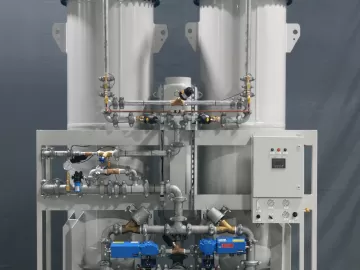NIOSH and OSHA Grade D Standard Review for Supplied Air Respirators
Compressed air is the most common utility used in a typical industrial facility. It encompasses most operating aspects of the plant. The compressed air system can end up being the most expensive utility due to the focus that if production is running - then leave the system alone. Processes and machines are added and as long as the compressor can handle the increasing load - all is good. This brings us to our subject matter. The plant adds a process, a specialty coating line, requiring respirator protection. The plant determines supplied air respirators are the best choice. They want to be responsible and do the right thing so they start by reviewing what OSHA has to say on the subject.




